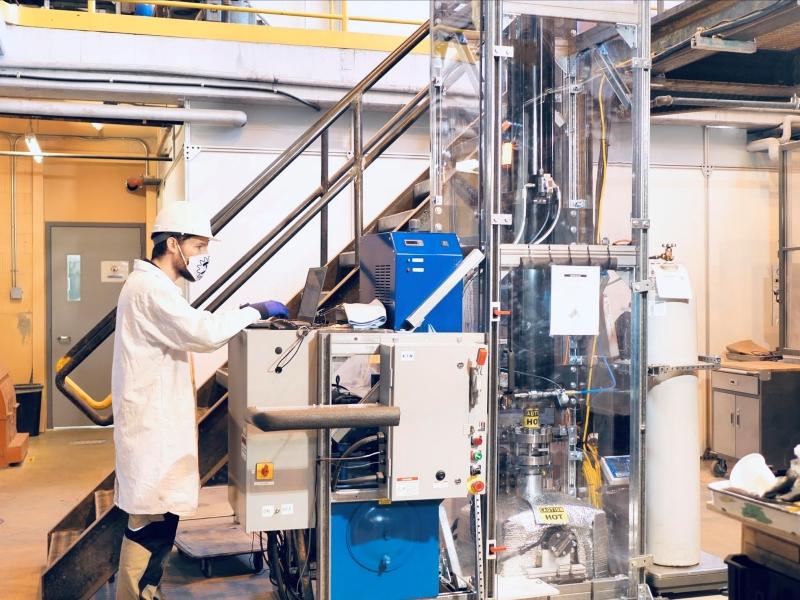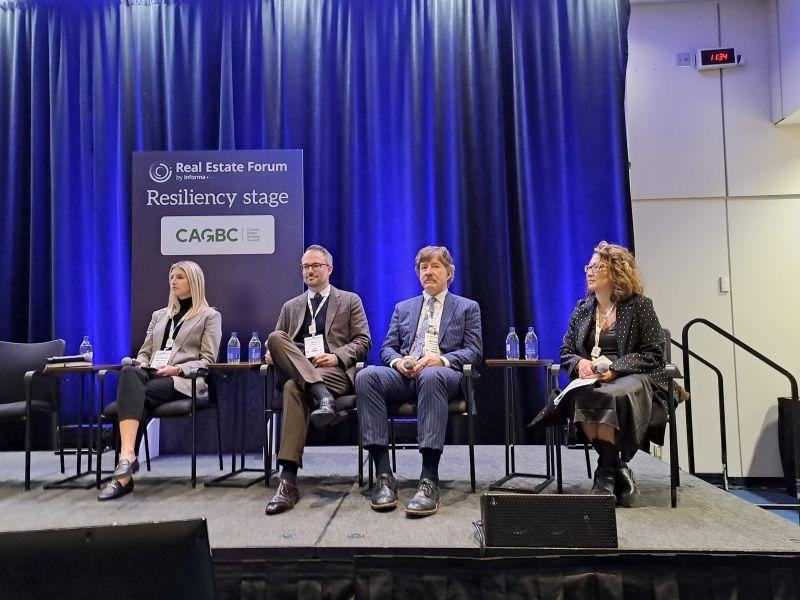
Real estate developer TAS will reuse approximately 6,000 tonnes of salvaged material in the redevelopment of a former municipal abattoir and the Wellington Destructor garbage incinerator at its 2 Tecumseth St. site in Toronto.
Toronto-based TAS will reuse the brick, precast concrete, steel rafters, tracks, concrete slabs and walls from the site as part of its efforts to create a circular economy at the development.
The company acquired the five-acre abattoir site in 2017; and has also become the lessee and developer for the adjacent two-acre Wellington Destructor site.
Demolition has just been completed.
When it is ready for occupancy sometime in 2026, the development will consist of seven buildings: two towers, one mid-rise building and four low-rises. This translates to 1,000 new homes — 40 per cent condos and 60 per cent rentals.
The more-than-one-million-square-feet of gross floor area will be split about 65 per cent residential spaces, 25 per cent office or institutional and 10 per cent retail.
“It is, effectively, this five-acre downtown Toronto site has been closed off to the neighbourhood, the city and it's an amazing place to walk in. How do we keep that sense of importance of this place? So a bit of grit, right, to put it bluntly, and . . . not just wipe and sterilize the site clean of what its history and what its place was as a really important landscape in the city,” Liza Stiff, TAS’ vice-president of impact, implementation and innovation, told SustainableBiz.
“So from the get-go (there’s) this idea of, ‘How do we ensure that into the vision and design of the new site, let alone the sustainable embodied carbon benefits of circularity and reuse?’ ”
2 Tecumseth Street
The abattoir, or slaughterhouse, ceased its operations in 2014. The Wellington Destructor was built in the 1920s and closed in the 1990s. TAS is the long-term lessee on the Destructor, following a request-for-proposals process with the City of Toronto.
The Destructor will be transformed into a community hub with an indoor park and public spaces, while the abattoir was demolished.
“What really changed from a traditional development site was working with our internal construction team, but also our demolition team, to itemize the materials. We were asking them to deconstruct and to salvage and save and stack on the side. Obviously, it's a large site,” Stiff said.
“So we're afforded space to do that. Not all sites could you store the materials that you're putting back in on the site, so that was a definite key to unlocking it.”
This is TAS’ first experience with material reuse.
A geothermal district energy system will be put in place and the site will target LEED and Fitwel certifications.
It is difficult to have a firm idea of the carbon emissions reductions due to the age of the site – the Wellington Destructor is nearly a century old – so TAS has more of an estimate. A site document states more than 1,000 tonnes of carbon dioxide emissions from the production of new materials will be avoided.
“It's an estimate . . . So there is math, but the way that we tend to frame it is by extending our use,” she said. “So by extending the use of those existing materials, we're really amortizing that initial carbon investment over a longer period.”
TAS has pledged to achieve net-zero emissions by 2045. The City of Toronto has a net-zero goal by 2040.
TAS and the circular economy
TAS is examining circularity in three lenses.
"The first is design and ideation. What are the best materials to reuse and how can we creatively think of how to reuse them? The second one is feasibility. What we know from countries in Europe is, we know many countries are not saying they're going to be net-zero by 2045, they're saying (they’re) going to be completely circular,” Stiff said.
“Then the last lens . . . is on the implementation.”
TAS’ approach to circularity did not start and stop with site construction. When it initially took control of the site, the company invited community feedback and consultation.
That resulted in several Toronto-based projects coming into the space in the years prior to starting construction, beginning with community gardens planted by the non-profit Bowery Project.
Alveole, an urban beekeeping project, has harvested approximately 60 kilograms of honey onsite since 2018.
Environmental startup Just Be Woodsy mills and kiln-dries salvaged trees, transforming them into functional furniture and objects. According to TAS, Just Be Woodsy has salvaged the equivalent of one million kilograms of carbon dioxide.
The startup paid TAS “in wood” during its time as a tenant. While these organizations aren't active onsite due to the ongoing construction, Stiff singled out Just Be Woodsy as one venture she hopes to have back at the new site.










